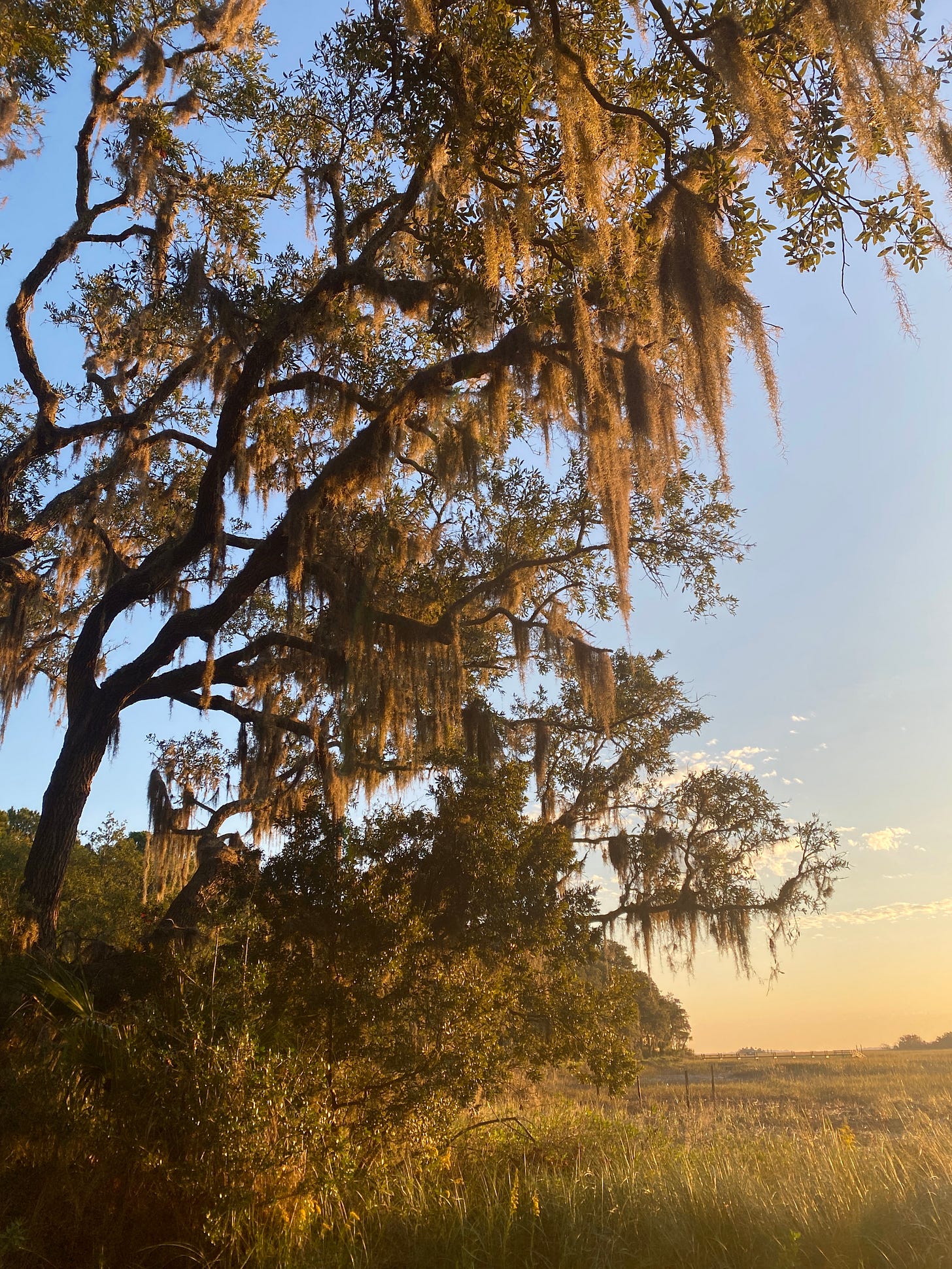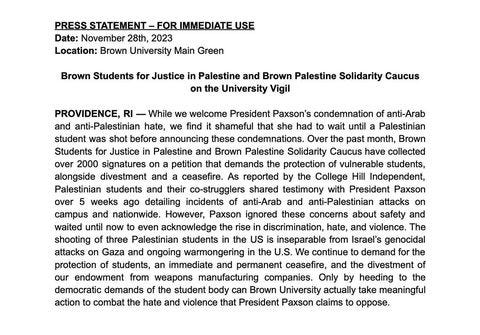It has been approximately three days since I have been able to speak, having lost my voice over the weekend. It has also been three days since I have left my house more than to move the trash to the curb. In this space—the same spot on my couch, watching the sun change from window to window as time passes around the room—I find myself turning inward. My phone—the texts, photos, social media posts—become my new window to the outside world. My phone tells me it is twenty degrees outside but I do not go to see for myself. I look at the blue sky and listen to the leaves fall and lean in to the solitude and comfort of a place I have not seen much of lately.
I spent much of October and November in other places: across the country on the West Coast, further South along the ocean, in Northern landscapes of sprawling fields and barren trees. I have seen the entirety of the country from beneath an airplane window: the snaking river, the suburban grid, the mountains covered in snow. In Oregon, I took in the familiar smell of pines in another version of home, an alternate reality where so much is the same and yet nothing is the same at all. In South Carolina, I watched the sun rise over the marsh and felt the water lap at the base of my cabin and thought—as I almost always am—about futurity. What will come next. Who will be the ones to shepherd the future in. What will be left of us, if anything. What imaginaries we tell and how they shape our lived reality. All the world is made up of stories, some more than others.
Last week T and I drove thirteen hours West, through North Carolina into Virginia, West Virginia, Ohio, and Michigan. We’ve done this drive together before, back in the summer, when all the world was green. Now, in winter, the world was barren and full of smoke from recent fires; the mountains widened into fields as we crossed over and through them. In Ohio, our map took us off the freeway onto a two-lane country highway that wove through various Midwestern American towns. It was 3pm and the sky was hazy as if night was already about to fall. At a stoplight, I looked in the rearview to see two boys driving past us in a horse and buggy. In the late days of November, groups of fathers and sons stood wrapped in sweatshirts in the town square, stringing Christmas lights around lampposts. There is so much you can learn about America in a car. Whenever I drive across the country—and these days I do frequently take on drives extending past ten hours—I find myself drawn in by the reminders of the vast contours of this country, how different each place is. Every place I visit in America feels caught in a different timeline and it feels, at times, impossible to imagine one unifying policy, or even one unifying story that could tie us all together.
“Slowly—and it took a while—I realized both that the America I’d been writing was wholly fictional, and that the real America, the one underneath the what-you-see-is-what-you-get surface, was much more interesting than the fictions…
…On one hand, there’s you, and on the other hand, there’s America. It’s bigger than you are. So you try and make sense of it. You try to figure it out—which is something it resists. It’s big enough, and contains enough contradictions, that it is perfectly happy not to be figured out…as a writer, all I could do was try to describe a small part of the whole. And it was too big to see…I wanted to write about America as a mythic place.”
— Neil Gaiman on writing American Gods
On the one hand there’s you; on the other hand there’s America. We tell so many stories about this place and almost always are they about the individual. For most of us, the idea of America is simply too big to grasp. We cannot possibly see it all. Our minds can’t contain it. That there are places out there who live alternatively to we do hardly passes through our cultural consciousness; we seek to imagine that we are all experiencing the same version of this country—a myth perpetuated by the constant onslaught of capitalism and suburbia, which recreate the same freeway exits and gridded neighborhoods and apartment complexes again and again across the place. How dystopian that you can eat the same fast food burger no matter where you are in America. How sad to see condos built in rural places that tower directly over the edges of highways, their windows looking right into their neighbors. How strange to drive through the country and see so many windows boarded up, so many proverbs painted to billboards, so many Trump flags hanging off of front porches. To see, up close, the cognitive dissonance that many of choose to live in, where we close ourselves into our bubbles of thought and fly right over a good bulk of the place we call home. I think often about those who come from bicoastal wealth, who fly back and forth between New York and Los Angeles and have no conception of the world that lies in between. And even worse, who see it without value.
I have come back multiple times this month to Naomi Klein’s excellent piece in the LRB about Edward Said, Israeli environmentalism, climate change, and the violence of othering. In particular, I resonate with her thoughts on justice and sacrifice in regional locations, which she calls “national sacrifice zones”:
“Fossil fuels aren’t the sole driver of climate change – there is industrial agriculture, and deforestation – but they are the biggest. And the thing about fossil fuels is that they are so inherently dirty and toxic that they require sacrificial people and places: people whose lungs and bodies can be sacrificed to work in the coal mines, people whose lands and water can be sacrificed to open-pit mining and oil spills. As recently as the 1970s, scientists advising the US government openly referred to certain parts of the country being designated ‘national sacrifice areas’. Think of the mountains of Appalachia, blasted off for coal mining – because so-called ‘mountain top removal’ coal mining is cheaper than digging holes underground. There must be theories of othering to justify sacrificing an entire geography – theories about the people who lived there being so poor and backward that their lives and culture don’t deserve protection. After all, if you are a ‘hillbilly’, who cares about your hills? Turning all that coal into electricity required another layer of othering too: this time for the urban neighbourhoods next door to the power plants and refineries. In North America, these are overwhelmingly communities of colour, black and Latino, forced to carry the toxic burden of our collective addiction to fossil fuels, with markedly higher rates of respiratory illnesses and cancers. It was in fights against this kind of ‘environmental racism’ that the climate justice movement was born.”
More and more in my work, I have come to believe that many people simply don’t care about the bulk of America. When we paint a place as backwards, we strip it of its value—and it feels almost impossible to be working in the nature of storytelling that reinstates value. To reinstate value despite belief, disagreement, loss, and violence; to reinstate value based on the qualification of looking beyond the myth. To see one another as human. To interrogate the stories told. To understand that the story I was told is not the same story as anyone else and it would be foolish to assume so. To work past my own instinctual feeling that my story matters more than anyone else’s and learn to see this country in multiplicity. To recognize that, in many places, tradition is what holds a community together. To think as a folklorist, which I have been trained these last few years to do: what do we make, what do we say, what do we do, what do we believe? What do these acts of human expression—our proof that we exist in the world—tell us about who we are?
“But somewhere in America, between the freeways and the Food-4-Less, between the filling stations and the 5-o-'clock news, behind the blue blinking light coming off the TV, there is a space, an empty space, between us, around us, inside us, that inevitable, desperate, begs to be filled up. And nothing, not shame, not God, not a new microwave, not a wide-screen TV or that new diet with grapefruits, can ever, ever fill it. Underneath all that white noise there's a lack.”
—Andrea Portes, Hick
As we drove, T and I fell into a conversation about the state of rural America and the role that I wish to play in advocating for it, in re-imagining an alternate America where the rural and urban are not seen as so at odds. Imagine if, in all these abandoned houses and storefronts, we had artists living and working, I said. Imagine if we could let people be artists in the places they are from and create opportunities out of that. If people could see themselves everywhere, all across this place. That’s the dream I have. That’s the America I want to see. T is both practical and politically-minded, so he immediately pointed out all the gaping holes in my vision. But I still believe in it. I still hope for a version of this place where all of us, together, are working to make sense of it—what it is and who we are within it. Where we are telling a thousand stories across a thousand towns and each one of them is simply a piece of the puzzle, the challenge, the myth that is America. When I look out at the smoke rising gently from the barns scattered through the frost and the glow of streetlights as the sky goes dark and the lamps switch on, I am almost sure I can look through the mist and see it.
PROMPT OF THE WEEK
What is one real thing you can see around you? Touch it, feel it, get a sense of what it is. Now turn it into a myth.
FIVE THINGS THIS WEEK
Teaching this Alex Mar piece on Slenderman, girlhood, and folk and fairy tales this week and it is always one of my favorite conversations.
These words by Hisham Awartani, a student at Brown who was a victim of the racial shooting in Vermont this past weekend, on account of being Arabic. May we all have the grace and grit to see ourselves in collectivity this way. May we all remain inspired by the collective power of the Palestinian people to use joy as resistance in the fight for our collective liberated future.
With that, this interview in GQ Middle East with human rights attorney Noura Erakat and her beautiful reminder: “Palestine is neither the beginning nor the end. Palestine is the place from which we fight for this new world where so much of it comes together. If I’m going to fight this hard, I want to fight this hard for all of us.”
Spotify Wrapped is out, and apparently I cannot stop listening to Radiohead.
Those who choose to stay, and to transform this place in doing so.







